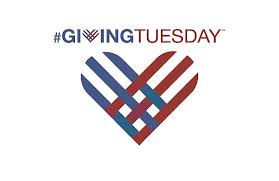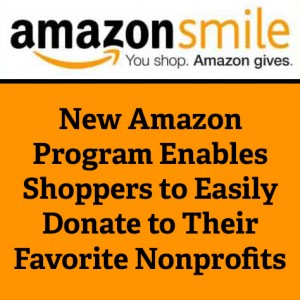Mission in Motion
By Rose Reinert
Guest blogger
 It was years into my role as Executive Director at a youth serving agency that it became crystal clear to me that helping people see could help them believe. Hands down, I encouraged board members to bring people in for tours, which often ended in an ask for an investment in our mission.
It was years into my role as Executive Director at a youth serving agency that it became crystal clear to me that helping people see could help them believe. Hands down, I encouraged board members to bring people in for tours, which often ended in an ask for an investment in our mission.
There is no argument that a story rich in description — sharing colors, smells, and sights — is gripping and engaging. There are countless opportunities for our beloved elevator speeches, and organization overviews, but there is no doubt, when you can provide someone the first hand look at the mission in motion, your sales pitch gets much easier.
This is the concept of Chapter 10 — “Got Video? (Video Sharing)” — in Lon Safko’s book, The Social Media Bible.
It is very easy nowadays to capture your “Mission in Motion” through various strategies. Consider utilizing some of these:
- Client Testimonials
- Board Member Orientation & Engagement
- Donor Highlights
- Organization Overview
It is sometimes difficult to get prospects for a tour or even to an event. So, why not utilize a short video via e-mail to share your mission and introduce them to your services? One of my favorite stories is a video that was made especially for a donor that highlighted a youth of the program thanking them for their investments.
How impactful!
Another great one was another youth agency that featured youth inviting guests to attend a benefit event through a short video invite.
Another great way to stand out to supporters!
Of course, the most simple online video is the simple case for support message like the one you see in the World Wildlife Fund (WWF) video about stopping the ivory trade and supporting their efforts to save the elephant population. Click here or on the video below to check-out this example.
[youtube=http://www.youtube.com/watch?v=_FB2doKRl94&feature=c4-overview-vl&list=PL0WSjIIFKH_gUaKCS6M1jfMP8PE1q0H_t]
In addition to reading Lon Safko’s book, here are a few additional links you might find helpful in developing your agency’s “picture” to share with prospects and donors:
- 4Good.org: “How to use you Home Video Camera to Film Nonprofit Testimonials“
- YouTube’s CitizenTube: “Secrets to making a great nonprofit video“
- The Case Foundation: “How to Shoot a Video Testimonial — 5 DIY Tips“
So how can you capture your mission to share your story best? How have you used video to engage donors or volunteers?


 WIIFM?—Writing a Blog
WIIFM?—Writing a Blog The most important question in all marketing is one we broached in
The most important question in all marketing is one we broached in  As you work to perfect your strategies, it is important to take some time to test it through what Safko calls segmenting.
As you work to perfect your strategies, it is important to take some time to test it through what Safko calls segmenting. The turkey has been consumed (and so have the leftovers). Black Friday came and went with only a few bumps and bruises for Americans. Cyber Monday also came and went with consumer dollars flying all over the information super highway. Are you ready for one last hurdle? Today, is
The turkey has been consumed (and so have the leftovers). Black Friday came and went with only a few bumps and bruises for Americans. Cyber Monday also came and went with consumer dollars flying all over the information super highway. Are you ready for one last hurdle? Today, is 
 I read this and imagine my organization with engaged donors engaged in open communication, positive feedback, while building a better organization. Ahhhh, nirvana, but wait . . . did he say negative feedback, too?
I read this and imagine my organization with engaged donors engaged in open communication, positive feedback, while building a better organization. Ahhhh, nirvana, but wait . . . did he say negative feedback, too? David was a tenured college professor. While an expert in his field, he knew very little about computers; just enough in fact to get on a network and ask for help. Fortunately, a more experienced user came to his aid, never failing to give just the right advice.
David was a tenured college professor. While an expert in his field, he knew very little about computers; just enough in fact to get on a network and ask for help. Fortunately, a more experienced user came to his aid, never failing to give just the right advice. A few short years ago, we couldn’t have even imagined such a scenario. In the past, proximity and commonality brought us together. We had family and close friends; help came from familiar places.
A few short years ago, we couldn’t have even imagined such a scenario. In the past, proximity and commonality brought us together. We had family and close friends; help came from familiar places. And I already see that I’m not adapting fast enough to keep pace with the innovations. The technology school bus isn’t waiting for me!
And I already see that I’m not adapting fast enough to keep pace with the innovations. The technology school bus isn’t waiting for me!
 Safko explains that social media marketing is like going to a networking event, a party, a trade show, church, or anywhere large groups of people gather.
Safko explains that social media marketing is like going to a networking event, a party, a trade show, church, or anywhere large groups of people gather. Don’t look now, but we are seven weeks away from drinking champagne and celebrating the end of 2013 and the start of a Happy New Year 2014. It is this time of the year when non-profit organizations are super busy. Many of you are closing out your fiscal year, and almost every non-profit with a pulse is executing its year-end giving strategy.
Don’t look now, but we are seven weeks away from drinking champagne and celebrating the end of 2013 and the start of a Happy New Year 2014. It is this time of the year when non-profit organizations are super busy. Many of you are closing out your fiscal year, and almost every non-profit with a pulse is executing its year-end giving strategy. I just finished helping a client with their year-end mail appeal. The executive director called on Friday to report the letters were delivered to the post office and we both did a little happy dance. The next thing on his year-end fundraising task list is preparing for the phone-a-thon follow-up the week of Thanksgiving.
I just finished helping a client with their year-end mail appeal. The executive director called on Friday to report the letters were delivered to the post office and we both did a little happy dance. The next thing on his year-end fundraising task list is preparing for the phone-a-thon follow-up the week of Thanksgiving. Holiday shopping appeals
Holiday shopping appeals #GivingTuesday
#GivingTuesday I don’t know about you, but radio plays an important role in my life. I used to live in my car traveling from client-to-client throughout the Midwest when I was an internal consultant. After opening my own consulting practice, I now travel much shorter distances, but I still spend a decent amount of time in my car. So, the radio is where I turn for a decent amount of news and entertainment, especially when I’m on the road. However, when I’m at home I don’t listen as much because I don’t get very good reception in the house, which is why I was so elated the other day when I discovered the
I don’t know about you, but radio plays an important role in my life. I used to live in my car traveling from client-to-client throughout the Midwest when I was an internal consultant. After opening my own consulting practice, I now travel much shorter distances, but I still spend a decent amount of time in my car. So, the radio is where I turn for a decent amount of news and entertainment, especially when I’m on the road. However, when I’m at home I don’t listen as much because I don’t get very good reception in the house, which is why I was so elated the other day when I discovered the  As I said in an earlier post this week, I am currently in Reno, Nevada at Boys & Girls Clubs of America’s Pacific Leadership Conference. The conference is being held at Silver Legacy Resort & Casino. Of course, in order to get from the hotel to the conference sessions, you need to walk through the casino where you are bombarded by all sorts of “shiny objects”.
As I said in an earlier post this week, I am currently in Reno, Nevada at Boys & Girls Clubs of America’s Pacific Leadership Conference. The conference is being held at Silver Legacy Resort & Casino. Of course, in order to get from the hotel to the conference sessions, you need to walk through the casino where you are bombarded by all sorts of “shiny objects”. In an effort to make the time pass more quickly, I started making a list. Admittedly, I started thinking way outside of the box, but here is some of what I came up with:
In an effort to make the time pass more quickly, I started making a list. Admittedly, I started thinking way outside of the box, but here is some of what I came up with:




